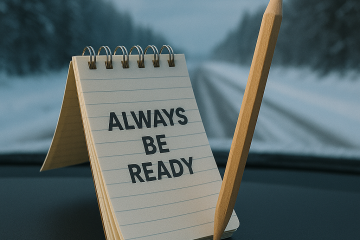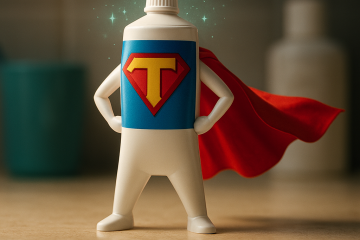by Kellene
As you know, I’ve strongly recommended in the past that you store at least one gallon of water per person, per day in order to be prepared for unforeseen events. However, what if you don’t have the luxury of benefiting from that which you have stored in your home? Well, here are a few “plan B” options for you.
1) Dry Creek Bed: If you see a dry creek bed, you’re most likely in luck. Follow the creek bed down-slope until you come to a bend in which the flow “s-curves” to the outside. Dig a hole about 2 feet away from that external part of the s-curve. You should only need to dig about a foot down. Voila. There should be water there, and you should be able to drink it due to the soil cleaning it. When in doubt though, always filter your water prior to drinking it.
2) Standing Water Pond: Chances are if you see a standing water pond that water is NOT safe to drink. It very likely has animal feces, a little dash of West Nile Virus, and a sprinkling of other lovely bacteria. So, dig a hole about 2 feet down, two to three feet outside of the standing water spot. That water will also be filtered from the soil. Grant it, it will be dirty, but it won’t have the feces and other bacteria.
3) Leafy Tree Limbs: If you’ve got leafy trees, you’ve got filtered water. Simply take a piece of plastic and secure it tightly around the leafy tree limbs. You can use rope, or rubber tie downs. Allow the plastic wrap to rest around the limb during the sunny part of the day. This will create a solar still for you, thus extracting the water from the leaves. You can then carefully take the bag off of the limbs, and consume the collected water.
4) Moisture in the Air- Yup. It can be yours if you simply capture it. This bodes true even if you’re out in the middle of the desert. Dig a 6-19 inch deep hole in the ground. Place an open container (i.e. bucket, can, pan, etc) in the middle of the hole. This will be collecting your water. Place a plastic sheet securely over the top of your hole. Secure and “seal” the outside perimeter of the sheeting with heavy rocks and even some dirt and sand. Place a rock in the center of your plastic sheeting directly about your collection container. This will concave the sheeting a bit so that as water condensation occurs, it will naturally drip into your container. After about 12 hours, you will have drinking water.
While this last strategy may not be a water source help to you, it may be useful if you have access to water but no fuel with which to clean it. Simply fill a clear 2 liter pop bottle with strained water (to get rid of the big stuff.) You can simply run the water through a cloth or a sieve, etc. You just want to get the big pieces out of it such as sand, silt, leaves, etc. Set your pop bottle out in the sun for 6 hours. The UV in the sun will kill all of the virus’ and bacteria after 6 hours.
Once again, I hope this information puts you more in the driver’s seat of any curve balls life may throw at you.
Become a fan of Preparedness Pro on Facebook
Follow us on Twitter here
To see our upcoming event schedule, click here
Subscribe to Preparedness Pro today and never miss a thing!
If you would like to host a preparedness party for your business, community, or church group, please contact Vicky at [email protected]
For any questions or comments on this article, please leave a comment on the blog site so that everyone can benefit!
Copyright 2010 Preparedness Pro & Kellene. All rights reserved. You are welcome to repost this information so long as it is credited to www.PreparednessPro.com & Kellene.





4 Comments
Marie · January 28, 2010 at 9:40 pm
Thanks for this info–it’s going in the emergency notebook. I’ve been thinking about what to do if stored supplies are inaccessible after an emergency strikes, and I hadn’t heard about digging for water at the given distances. Hopefully will never need it, but it’s better to know different alternatives just in case.
jamie · January 29, 2010 at 5:01 am
Run some surgical tubing into the collector. Then you can sip away without disrupting the prosess.
jamie · January 29, 2010 at 5:36 am
This is a great plan B for water. I’d say outside of the “Solar Still” I’d recommend all water be treated and assume it’s contaminated. Most “Storm or Street drains run into the nearest river. Now you may be a good citizen and not dump your waste in that convenient storm grate. But do you think others will?
Runs smack dab into Kellene’s warnings about water. ” I ‘ll just go to the creek, river. Does not sound so great if you knew someone is dumping his porti-potty down the storm drain.
I agree with Kellene this is the best way to gather water. Coffee filters are a good way to strain out the big chunks. Plus they are cheap.
I do think part of a plan B is to have a way to sanitize your water.
A couple of additions for the ground/solar still. Black plastic works best, absorbs more solar energy. You can urinate in the hole , please take out your water collector out 1st. Then replace the bag, pebble and cup.
Water is so critical, food 3 weeks and most of us Americans could live not off of the fat of the land but the fat of ourselves. I believe that most of us in the USA are about 20-30 pounds overweight. Well that’s prepping,in kinda of a weird way.
jamie · February 5, 2010 at 9:45 am
It’s a bit of work for any plan B. Wouldn’t be easier to prep ahead of time. 🙂
Proper plans, prevent poor performance.
Comments are closed.